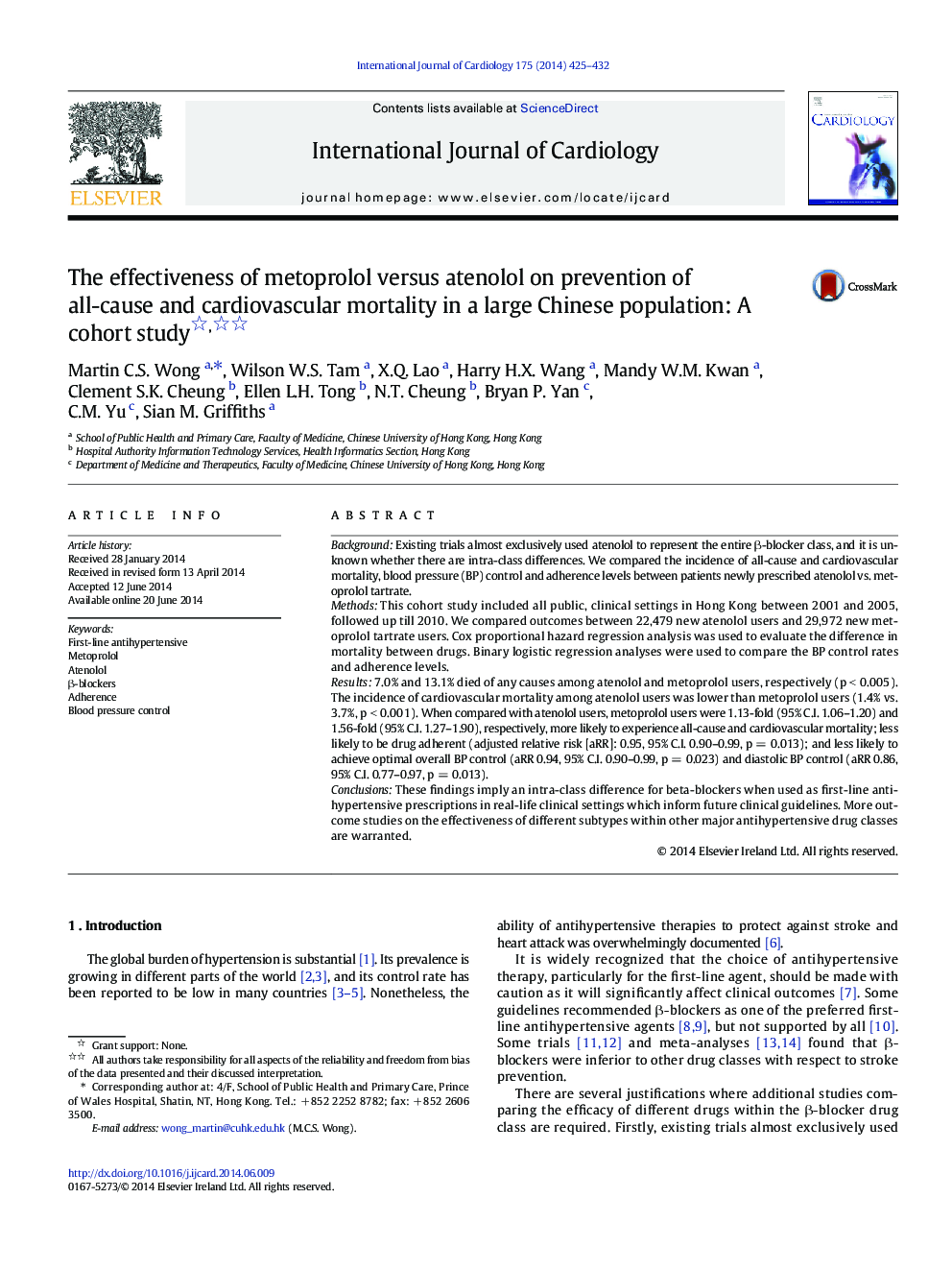| کد مقاله | کد نشریه | سال انتشار | مقاله انگلیسی | نسخه تمام متن |
|---|---|---|---|---|
| 5970070 | 1576181 | 2014 | 8 صفحه PDF | دانلود رایگان |

- Clinical outcomes between new users of atenolol and metoprolol were compared.
- 7.0% (atenolol) and 13.1% (metoprolol) died from any causes within 5Â years.
- Metoprolol users were more likely to die from any causes and CVS diseases.
- Metoprolol users were less likely to achieve optimal drug adherence and BP control.
- There is intra-class difference when β-blocker was used as antihypertensive drug.
BackgroundExisting trials almost exclusively used atenolol to represent the entire β-blocker class, and it is unknown whether there are intra-class differences. We compared the incidence of all-cause and cardiovascular mortality, blood pressure (BP) control and adherence levels between patients newly prescribed atenolol vs. metoprolol tartrate.MethodsThis cohort study included all public, clinical settings in Hong Kong between 2001 and 2005, followed up till 2010. We compared outcomes between 22,479 new atenolol users and 29,972 new metoprolol tartrate users. Cox proportional hazard regression analysis was used to evaluate the difference in mortality between drugs. Binary logistic regression analyses were used to compare the BP control rates and adherence levels.Results7.0% and 13.1% died of any causes among atenolol and metoprolol users, respectively (p < 0.005). The incidence of cardiovascular mortality among atenolol users was lower than metoprolol users (1.4% vs. 3.7%, p < 0.001). When compared with atenolol users, metoprolol users were 1.13-fold (95% C.I. 1.06-1.20) and 1.56-fold (95% C.I. 1.27-1.90), respectively, more likely to experience all-cause and cardiovascular mortality; less likely to be drug adherent (adjusted relative risk [aRR]: 0.95, 95% C.I. 0.90-0.99, p = 0.013); and less likely to achieve optimal overall BP control (aRR 0.94, 95% C.I. 0.90-0.99, p = 0.023) and diastolic BP control (aRR 0.86, 95% C.I. 0.77-0.97, p = 0.013).ConclusionsThese findings imply an intra-class difference for beta-blockers when used as first-line antihypertensive prescriptions in real-life clinical settings which inform future clinical guidelines. More outcome studies on the effectiveness of different subtypes within other major antihypertensive drug classes are warranted.
Journal: International Journal of Cardiology - Volume 175, Issue 3, 20 August 2014, Pages 425-432